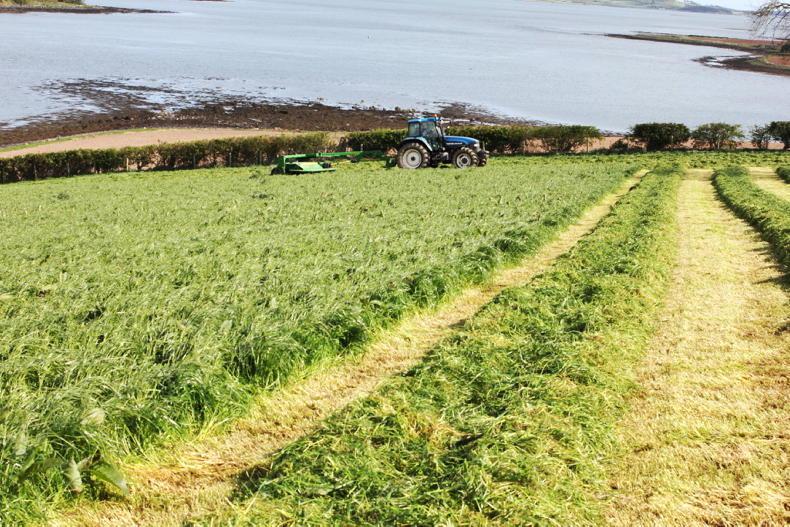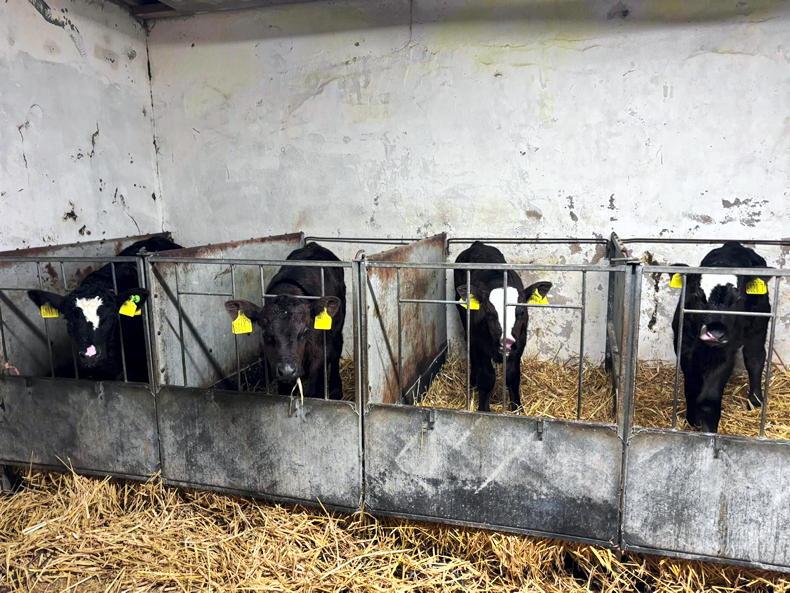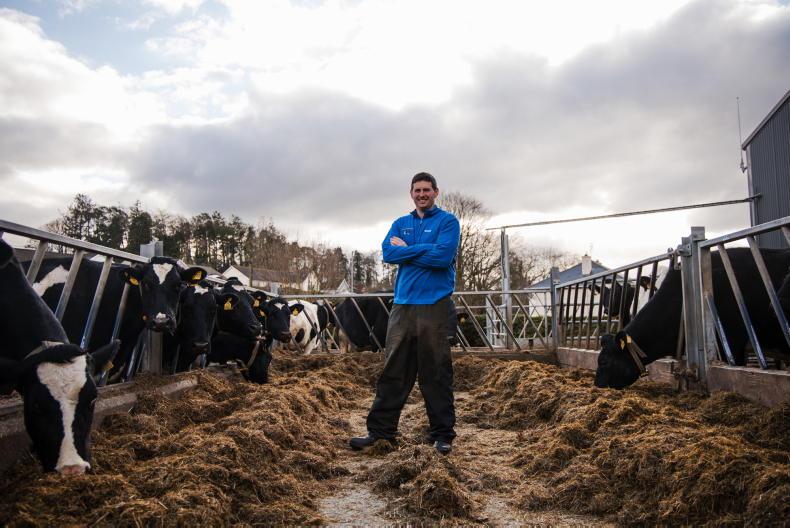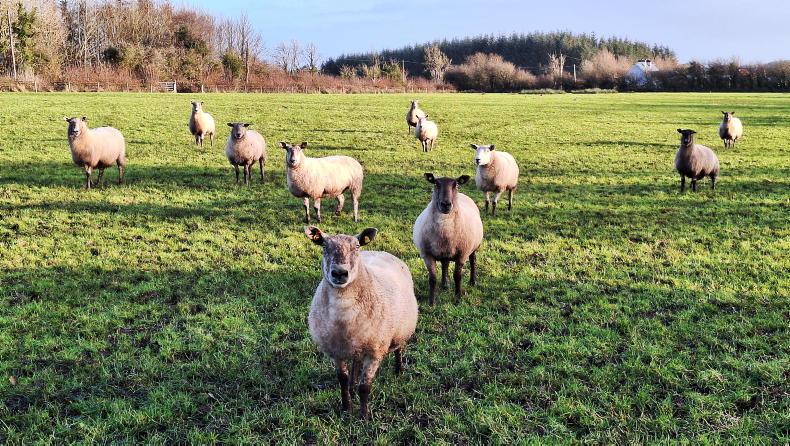With little sign of any significant drop in animal feed prices over the months ahead, making top-quality silage this season is a must, especially when targeting feed at productive animals, attendees at an online event organised by Alltech were told last Thursday.
The aim on farms should be a silage with an ME above 11.5 MJ/kg, a dry matter around 30%, and a crude protein (CP) of at least 14%.
“On some farms, silage is considered to be a cheap feed, but if it is made incorrectly it becomes very expensive. It is the most important feed on the farm,” said silage expert Dr Dave Davies.
He explained that cattle fed highly digestible silage (D-value 70+) will be able to consume more forage, so will produce more milk (or liveweight) and will be less at risk from digestive upsets.
To make high-D-value silage, farmers should follow the age-old advice of ensiling the crop just before seed heads form, waiting to mow grass until dew has lifted (ideally in the afternoon or early evening) and wilting to 25% to 30% dry matter within 24 hours.
However, manipulating the CP content of the silage takes more effort. While CP content naturally declines as the grass plant matures, it is also directly linked to the amount of nitrogen (N) supplied to the crop.
Davies presented data to show that there is a significant cost benefit from ensuring sufficient N is applied. In a hypothetical example, he compared two silages, one which received 150kg N/ha and the second which received only 30kg N/ha. The first silage had a CP content of 17%, the second, only 12%. This equates to an extra 350kg of CP/ha with Silage 1.
The cost of the extra fertiliser works out around £100/ha, but the value of the extra 350kg of CP (when compared to soya at £400/t) is £334, so the overall benefit from the extra N is £234/ha.
Resistant
The problem with a grass sample that has a CP content above 17% to 18% is that it has a higher buffering capacity, so is more resistant to a change in pH when ensiled. As a result, there is the increased risk that pH does not drop to the desired level (3.8 – 4.2) necessary for a stable fermentation in a pit.
To ensure a stable fermentation, it is vital to wilt this grass to around 30% dry matter as quickly as possible, or alternatively, apply a chemical additive (not an inoculant) to drive down the pH, said Davies.
“I am a big fan of pre-cut grass analysis, and using this analysis to gauge what you need to do for further cuts,” he advised.
The target should be 17% CP and 0.15% nitrate N in the fresh matter. A grass analysis showing 17% CP and 0.2% N suggests that too much N has been added, and the crop needs wilted, or a chemical additive applied. An analysis of 14% CP and 0.05% nitrate N indicates more N was required, said Davies.
Application
Farmers in NI can use a crop nutrient calculator on APHIS online to work out crop needs. For first cuts the recommendation is to apply 120kg of N/ha, but if 2,500gals/acre of slurry has been spread, this drops to around 95kg N/ha, or just under three bags of CAN per acre.
However, Davies warns about applying slurry too close to cutting date, as there is the risk of clostridia from slurry being taken into the pit, causing a bad secondary (butyric) fermentation. “Where slurry is applied with a splash plate it shouldn’t be cut for eight weeks. Six weeks are OK if working with a trailing shoe,” he suggested.
In a multi-cut system, slurry should go on immediately after cutting, and it might be necessary to use a chemical additive to inhibit clostridia bacteria in the pit.
Clover
Davies acknowledged that clover based swards have huge potential to increase CP content of silage, and significantly reduce fertiliser inputs. But he said that farmers should consider using a silage additive as clovers tend to be high in CP, have a high buffering capacity, but are more difficult to wilt.
In any crop, wilting beyond 24 hours leads to increased loss of sugars and protein.
Davies also recognised that dairy farms need to make some poorer quality, low potassium (K) silage for dry cows. To do that, he said that farmers should avoid fields with a soil index of 3 or above for K, and grow the crop without any slurry, just straight N. “Third and fourth cuts also tend to be higher in K, so don’t feed them to dry cows,” he said.
Read more
Reseeding: where, when and how?
Contrasting fortunes with silage quality
With little sign of any significant drop in animal feed prices over the months ahead, making top-quality silage this season is a must, especially when targeting feed at productive animals, attendees at an online event organised by Alltech were told last Thursday.
The aim on farms should be a silage with an ME above 11.5 MJ/kg, a dry matter around 30%, and a crude protein (CP) of at least 14%.
“On some farms, silage is considered to be a cheap feed, but if it is made incorrectly it becomes very expensive. It is the most important feed on the farm,” said silage expert Dr Dave Davies.
He explained that cattle fed highly digestible silage (D-value 70+) will be able to consume more forage, so will produce more milk (or liveweight) and will be less at risk from digestive upsets.
To make high-D-value silage, farmers should follow the age-old advice of ensiling the crop just before seed heads form, waiting to mow grass until dew has lifted (ideally in the afternoon or early evening) and wilting to 25% to 30% dry matter within 24 hours.
However, manipulating the CP content of the silage takes more effort. While CP content naturally declines as the grass plant matures, it is also directly linked to the amount of nitrogen (N) supplied to the crop.
Davies presented data to show that there is a significant cost benefit from ensuring sufficient N is applied. In a hypothetical example, he compared two silages, one which received 150kg N/ha and the second which received only 30kg N/ha. The first silage had a CP content of 17%, the second, only 12%. This equates to an extra 350kg of CP/ha with Silage 1.
The cost of the extra fertiliser works out around £100/ha, but the value of the extra 350kg of CP (when compared to soya at £400/t) is £334, so the overall benefit from the extra N is £234/ha.
Resistant
The problem with a grass sample that has a CP content above 17% to 18% is that it has a higher buffering capacity, so is more resistant to a change in pH when ensiled. As a result, there is the increased risk that pH does not drop to the desired level (3.8 – 4.2) necessary for a stable fermentation in a pit.
To ensure a stable fermentation, it is vital to wilt this grass to around 30% dry matter as quickly as possible, or alternatively, apply a chemical additive (not an inoculant) to drive down the pH, said Davies.
“I am a big fan of pre-cut grass analysis, and using this analysis to gauge what you need to do for further cuts,” he advised.
The target should be 17% CP and 0.15% nitrate N in the fresh matter. A grass analysis showing 17% CP and 0.2% N suggests that too much N has been added, and the crop needs wilted, or a chemical additive applied. An analysis of 14% CP and 0.05% nitrate N indicates more N was required, said Davies.
Application
Farmers in NI can use a crop nutrient calculator on APHIS online to work out crop needs. For first cuts the recommendation is to apply 120kg of N/ha, but if 2,500gals/acre of slurry has been spread, this drops to around 95kg N/ha, or just under three bags of CAN per acre.
However, Davies warns about applying slurry too close to cutting date, as there is the risk of clostridia from slurry being taken into the pit, causing a bad secondary (butyric) fermentation. “Where slurry is applied with a splash plate it shouldn’t be cut for eight weeks. Six weeks are OK if working with a trailing shoe,” he suggested.
In a multi-cut system, slurry should go on immediately after cutting, and it might be necessary to use a chemical additive to inhibit clostridia bacteria in the pit.
Clover
Davies acknowledged that clover based swards have huge potential to increase CP content of silage, and significantly reduce fertiliser inputs. But he said that farmers should consider using a silage additive as clovers tend to be high in CP, have a high buffering capacity, but are more difficult to wilt.
In any crop, wilting beyond 24 hours leads to increased loss of sugars and protein.
Davies also recognised that dairy farms need to make some poorer quality, low potassium (K) silage for dry cows. To do that, he said that farmers should avoid fields with a soil index of 3 or above for K, and grow the crop without any slurry, just straight N. “Third and fourth cuts also tend to be higher in K, so don’t feed them to dry cows,” he said.
Read more
Reseeding: where, when and how?
Contrasting fortunes with silage quality










SHARING OPTIONS